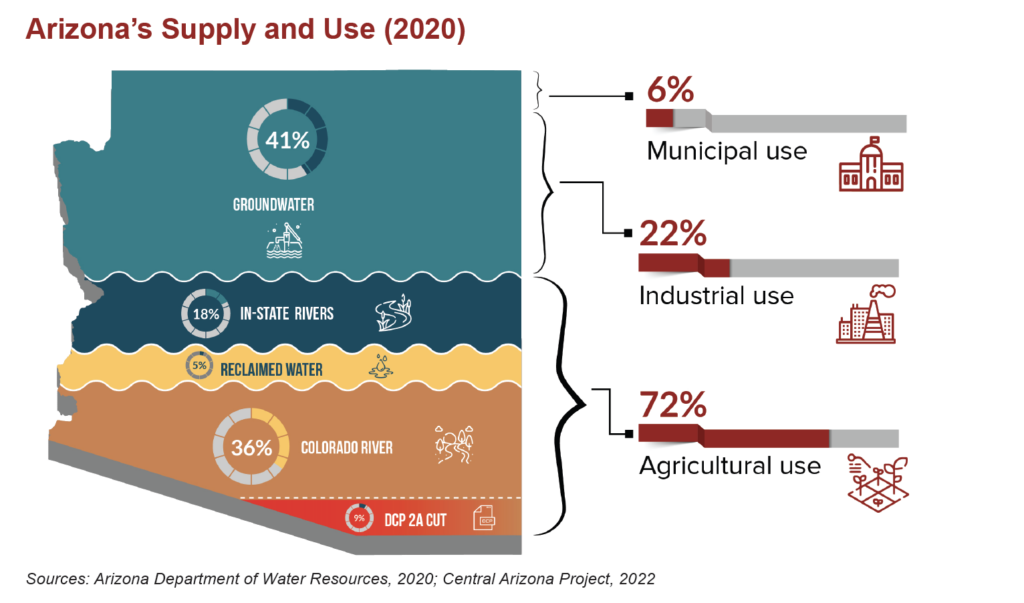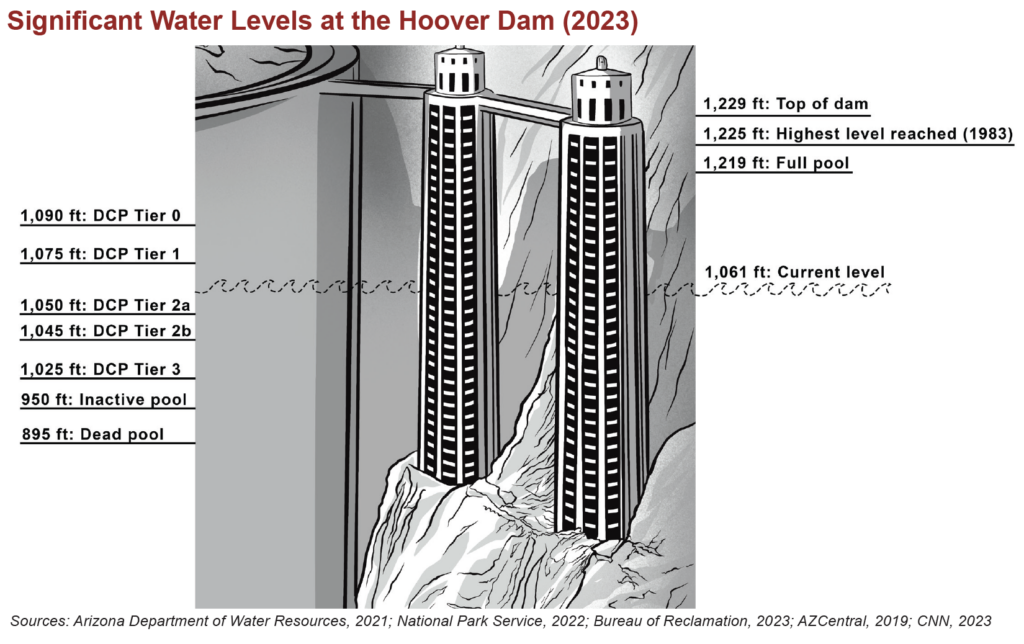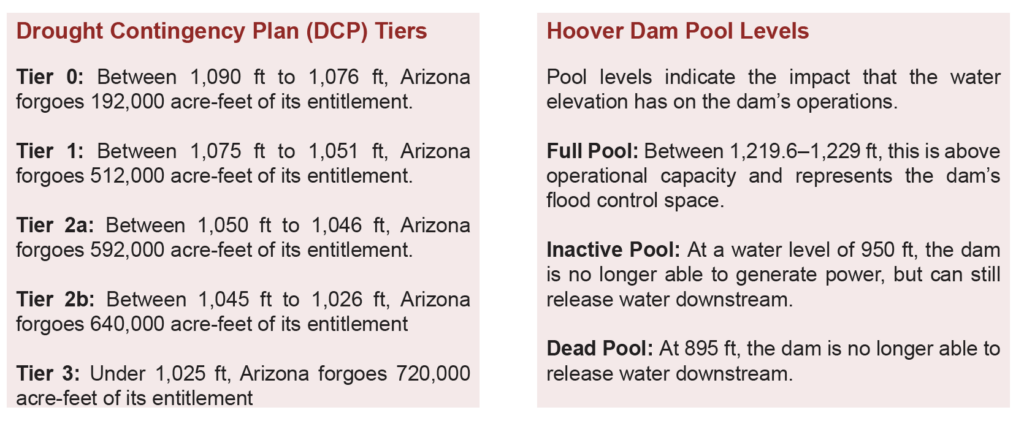 Canyon Connections - Newsletter
Canyon Connections - Newsletter
Canyon Connections – September 2023
December 7, 2023Canyon Connections is a newsletter from the nonpartisan think tank the Grand Canyon Institute (GCI), giving you the latest on the research and data surrounding important policy issues in Arizona.
The Water Issue
For over a century, water sourcing and conservation has been at the forefront of Arizona’s public policy conversation. With a once-in-1,200-year drought now strickening the region, consensus on pragmatic solutions is more important than ever. Yet it can be easy to get lost in the whirlwind of headlines covering a litany of drought plans, water rights, and shortage controversies. This newsletter aims to provide a crash course on where Arizona’s water comes from, where it goes, and how it plans on dealing with the drought.
Where Water Comes From, and Where It Goes
Most of Arizona’s water is sourced from groundwater and the Colorado River, and is used for agriculture. To protect the Colorado River, surrounding states agreed on a Drought Contingency Plan (DCP). Currently, in a Tier 2a shortage, Arizona’s share in the reductions accounts for 9% of the state’s total water use.
Late Mead’s Water Level
The Colorado River accounts for more than a third of Arizona’s water supply. However, Lake Mead, the main reservoir for the Lower Basin states (Arizona, California, and Nevada), has dropped over 150 feet since the year 2000. In 2007, Colorado River Basin states agreed on a Drought Contingency Plan (DCP), which was further developed this plan in 2019 when it was clear that the two-decades-long drought was worsening.
In 2020 and 2021, the river experienced a Tier 0 shortage status, which cut Arizona’s 2.8-million acre-foot annual entitlement by 192,000 acre-feet. Lake Mead’s elevation continued to drop, leading to a Tier 1 shortage in 2022 and a Tier 2a shortage in 2023. An above-average winter snowpack has led to slightly higher water levels, returning the river to a Tier 1 shortage in 2024.
Central Arizona Project Fulfillment
As the Colorado River shrinks and the DCP tier climbs, different categories of users bear the brunt of water delivery cuts differently. The Central Arizona Project (CAP), the organization and infrastructure responsible for diverting water from the river to Central and Southern Arizona, currently delivers only 75% of the water that it is normally allocated.
With the River operating at a DCP Tier 2a shortage in 2023, agricultural users do not receive any water from CAP. With 2024 returning to a Tier 1 shortage, CAP will resume delivering water to agricultural users, but at a level 65% lower than normal.
Municipal, industrial, and tribal users also see reductions, albeit much less severe. This is in part due to CAP retaining water in Lake Mead and acquiring credits for an intentionally created surplus. This allowed CAP to use some of these credits to mitigate cuts to municipal, industrial, and tribal users, resulting in no net reductions during the Tier 1 shortage in 2022 and single-digit reductions during the Tier 2a shortage in 2023.
This mitigation accounts for 200,000 acre-feet of water in 2023. CAP will supply one million acre-feet from the River and see 400,000 acre-feet in reductions.



